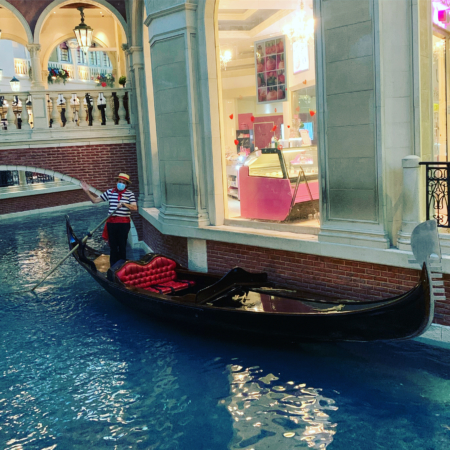
Welcome, All! This is the first of many pieces that I will have the pleasure to contribute to Cuisineist.com regarding everything Mixology. As there are many pressing and exciting topics that I am so passionate about and eager to discuss, I actually find myself struggling to select just one theme. So, since we have all just celebrated the 78th Anniversary of Repeal Day- you know, the day where it became legal to once again manufacture, distribute and, oh, yes… consume alcohol! It’s only fitting that we discuss….. And, believe me, I celebrated like it was 1999 (all over again)!
Prohibition or as it became known as “The Noble Experiment” took effect on January 17, 1920 when the 18th Amendment was ratified one year earlier on January 16 by Congress completely banning the manufacturing, sales and consumption of all alcohol in the United States. What many people do not realize is that this act was in the works for well over a century, but only took effect in certain states and counties at a time, but never unanimously or simultaneously. It was a desperate motion by this nation’s Conservative groups and parties (The Feminist Movement, Methodist church, legislature, the Anti-Saloon League, etc.) who was out to prove that alcohol was responsible for this country’s ongoing social disorder and sharp decline. If our founding fathers, many of whom, were beer craftsmen and alcohol distillers, themselves, were only alive to see this come to fruition….
Instead of actually bettering the situation, Prohibition fueled the rapid rise of organized crime, speakeasies, bootleggers, record numbers of illegal distilleries and production of very poor quality moonshine and “bathtub” spirits. It was truly a very low point in our industry’s history, not to mention the ensuing Great Depression a few years later. There were a handful of distilleries still permitted by the government to continue the production of whisky and brandy for “medicinal purposes” as well as some wineries which produced kosher wine or church wine. It wasn’t until December 5, 1933 that the 21st Amendment was ratified which repealed the 18th Amendment and ended Prohibition. Although we celebrate Repeal Day on December 5th, alcohol consumption was not permitted legally until December 15th.
The popularity of Mixology has been noted by some to have been widely stimulated beginning in the early 1860’s when a pioneer in the industry named Jerry Thomas published the very first bar book entitled The Bartender’s Guide in 1862. Soon, several others took follow publishing many types of bar books, but none of the sort that we see today. With this said, the turn of the 20th century saw much promise and growth and this would be the very first Golden Age of cocktail culture. The trends back during this period seemed somewhat different, but in some aspects, very similar from what they are today. From 1860-1918 there were already dozens of “cocktails” (drinks, more appropriately so) in existence, most of them, published.
The rise of the Manahttan, Martini, Sazerac, Mint Julep, and many, many more experienced much popularity during this time and through the turn of the 20th century even though cocktails like the Mojito, Mint Julep and Sazerac had been invented decades earlier. Then you would have other unique creations like the Monkey Gland, Bronx cocktail, Clover Club, Last Word, Corpse Reviver No. 2, etc. that were developed years later and that saw their heyday, but were permanently defunct in this country and spent half a century (plus) dormant before being very slowly resurrected towards the later part of the 20th century and just now enjoying a strong resurgence. However, one of the mainstream trends was deciphering the different categories of drinks. Let’s see…..There were bucks, cobblers, juleps, flips, highballs, fizzes, slings, daisies, collins, sours and punches, all dictated by what specific ingredients it utilized and by whatever glassware and means it was served in. For example, a Martini is a specific type of drink consisting of London dry gin, dry vermouth and orange bitters that was typically stirred over ice and served chilled and straight up in a coupe or martini shaped glass (smaller than what we normally serve in today).
Nowadays, we call everything a martini that is served straight up in any contemporary shaped martini glass. This craft was taken very seriously, indeed, and to an extent, the consumer was also very passionate and intuitive to what they were drinking. After all, it would not be an uncommon practice for a patron to specifically request what ratio of main spirit to vermouth they would like in either their Manhattan or Martini. And, speaking of vermouth, since when did everyone develop such a tremendous allergy to vermouth? It’s right up there with shellfish, dairy, pollen and hay weed, I gather, since the majority of people do not want any vermouth at all to very little in their Martini, but they look at you in disgust when you even make the mere suggestion.
Once Prohibition took place, the most serious of cocktailians and bartenders left this “dry” and barron wasteland and chose to further extend their illustrious careers in locations such as England, France, Cuba, Italy, Australia, Peru, Japan, etc. where mixology had not quite peaked, but welcomed this movement with open arms and an open mind. Sadly, I think to myself over and over what if…. What if, these dark times never came to pass? How different (or wonderful) would things actually be today? What would today’s trends be? Sinfully, I wonder if vodka would have ever even experienced the ghastly and exponential growth that it has over the past 25 years. One could only wish, right?
We are very fortunate to be a part of these modern times. But, we paid the price for many years. Our predecessors never quite had the access of ingredients that we do majorly due to the availability of infinite ingredients at our disposal, arguably, a much bigger desire and consumer demand to create new flavors and products, the internet and speedy and much more efficient shipping methods. Spirits such as Swedish Punch, Amer Picon (still unavailable but Torani produces a very good variation) Batavia Arrack, Parfait Amour (including Crème de Yvette and Violette) and even Chartresue that had been extinct or difficult to obtain in this country for several decades have enjoyed a very happy return to many of us that welcomed them with such warm embraces.
The Beatles had a song called The Long and Winding Road and that is what it literally feels like to reach the point that we have gotten to, today. Fortunately, more and more of today’s bar and industry professionals are becoming enamored with the ways of the past, including its cocktails, products, styles and methods which are contributing to the strong resurgence of this trend along with the very big modern mixology movement. What happened from 1933 through today is a different story for a different day that I will be writing about in the near future. For now, let’s raise a glass to the Second Golden Age of our Cocktail Culture and the many wonderful things to come.


No comments:
Post a Comment